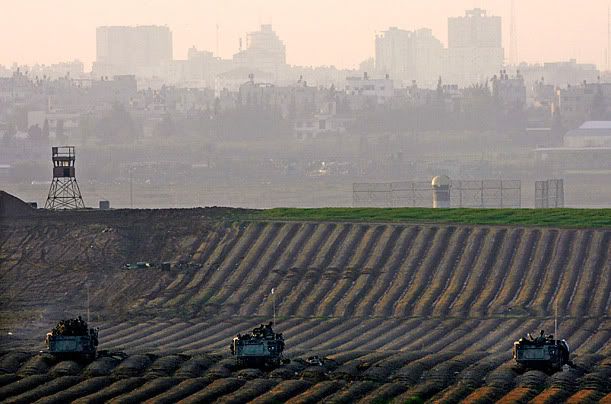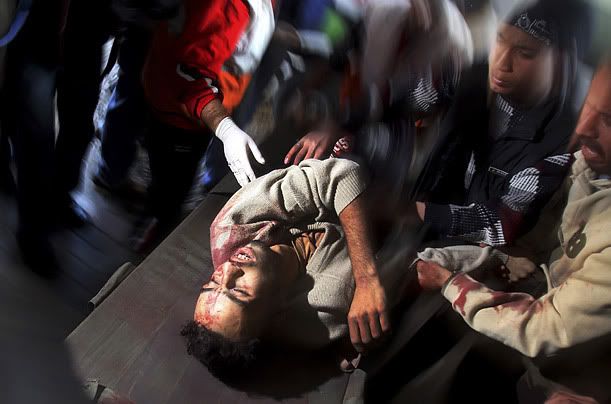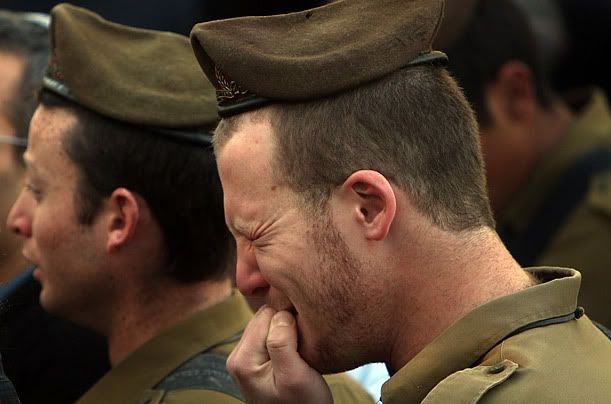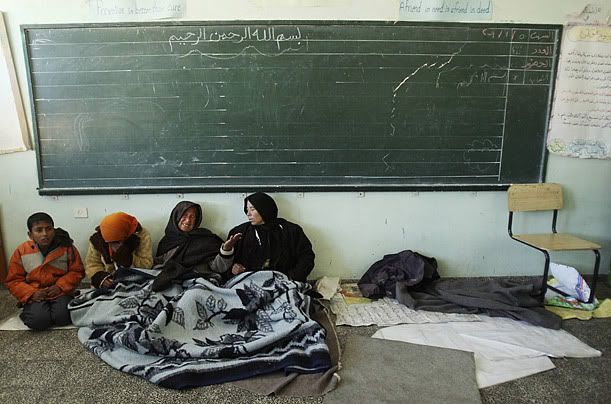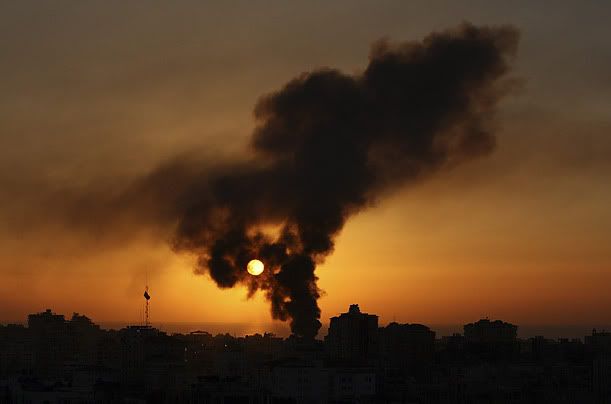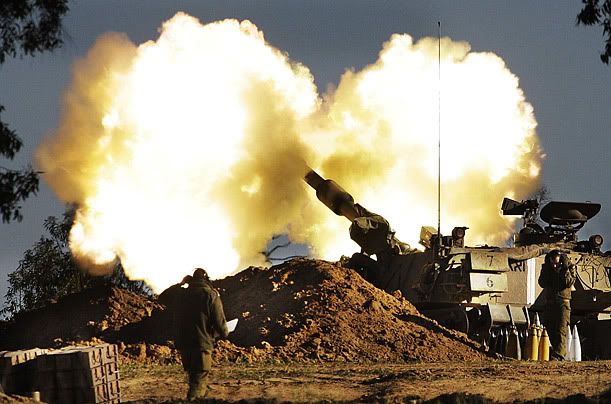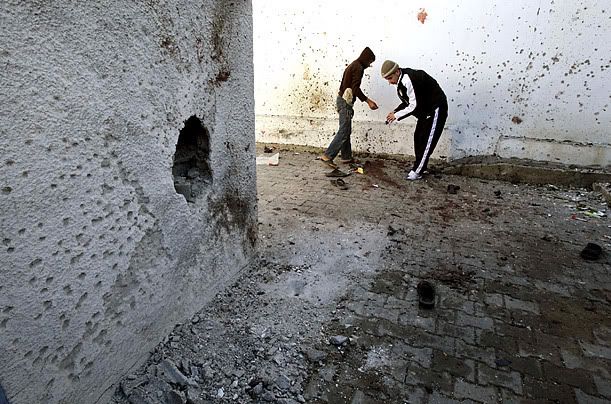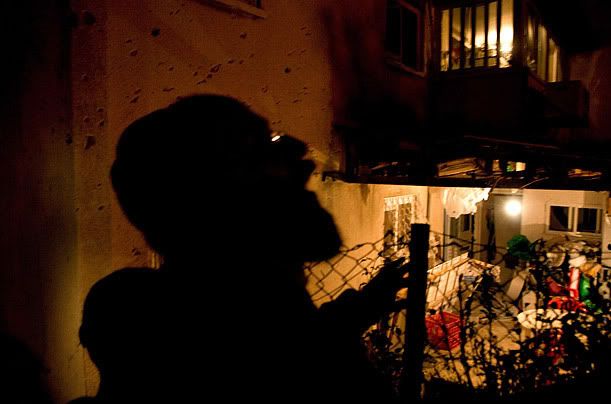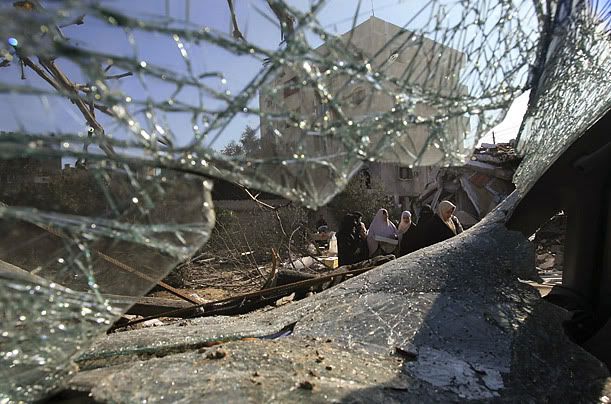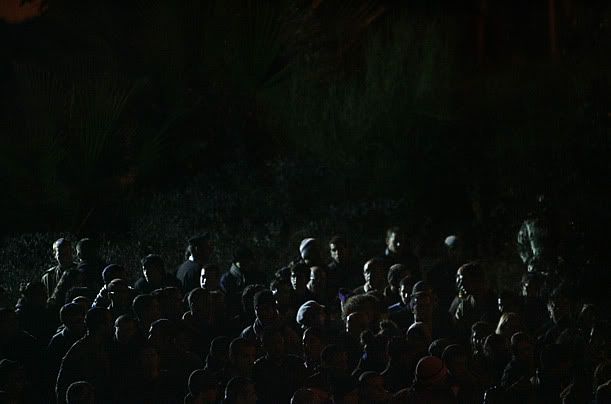Palestinian National Authority
Interim governing body appointed July 1994 to take over the management of
Palestinian affairs from Israel in newly liberated Gaza Strip and Jericho. It is headed by Yasser Arafat, chairman of the PLO. The PNA has jurisdiction over the whole of the formerly occupied areas, except Israeli settlers and nationals, Israel retains responsibility for external defence and foreign affairs.
Palestinian Legislative Council (PLC)
The first elected Palestinian Legislative Council (PLC) was initially conceptualized with the Declaration of Principles (DOP). The idea was further developed in the Israel-Palestinian Interim Agreement (Oslo II) in which the structure, jurisdiction, functions, size, and responsibilities of the Council were determined.
The PLC, is to replace the Palestinian Authority upon it inauguration. As such, the Council is expected to act as the highest authority in the interim phase. The PLC is the body responsible for legislation and from it the majority (80% of the cabinet) of the Executive Authority is appointed.
Committees of the Council
The Council established eleven permanent committees at its second meeting on April 4, 1996. Under Title III of the Standing Rules, the committees review and propose amendments to legislation, report to the Council, receive constituent complaints, and study and review plans, programs, agreements, and treaties submitted to the Council by the Executive Authority. The committees discuss and report to the Council on any proposals referred by the Council or by the Speaker. The committees usually meet twice a week and may hold additional meetings at the call of the chairman, or by request of the Speaker or a majority of the members of the committee, with at least 24 hours notice. The committees meet in secret but can decide to hold public meetings. The quorum for a committee meeting is a majority of its members and decisions of the committees require a simple majority. Each committee has a chairman and a secretary elected from among its members. A committee may request, through the Speaker, that any relevant Minister or responsible person within the Palestinian National Authority give information or clarify any issue within the committee’s mandate. A committee may also ask the Speaker to request, through the President of the Authority, the attendance of any relevant Minister at a committee meeting.
Anthem
The Palestinian national anthem, Biladi ("My Country"), is the national anthem of the State of Palestine, adopted in 1996 in accordance with Article 31 of its declaration of independence in 1988. It was written by Said Al Muzayin, and its music was composed by Egyptian maestro Ali Ismael, and it was known as the "Anthem of the Palestinian revolution".
Since 1936, Mawtini ("My homeland") was unofficially the anthem used by Palestinians, it was written by Ibrahim Towqan and composed by the Lebanese composer Mohammad Flaifel. This should not be confused with Biladi, the official anthem.
My country, my land, land of my ancestors
My country, my country, my country
My people, people of perpetuity
With my determination, my fire and the volcano of my revenge
With the longing in my blood for my land and my home
I have climbed the mountains and fought the wars
I have conquered the impossible, and crossed the frontiers
My country, my country, my country
My people, people of perpetuity
With the resolve of the winds and the fire of the guns
And the determination of my nation in the land of struggle
Palestine is my home, Palestine is my fire, Palestine is my revenge and the land of endurance
My country, my country, my country
My people, people of perpetuity
By the oath under the shade of the flag
By my land and nation, and the fire of pain
I will live as a fida'i*, I will remain a fida'i, I will end as a fida'i - until my country returns
My country, people of perpetuity.
fida'i = one who risks his life voluntarily; one who sacrifices himself; fedayeen
Main cities in Palestine
| | |
| | |
| Jenin | Tulkarm |
Rafah | | Khan Yunus |
|
Gaza Strip
Gaza, (Arabic Ghazze), city and port near the Mediterranean Sea, about 32km north of the Egyptian border. This ancient city has given its name to the Gaza Strip, a territory that was occupied by Israeli forces from 1967 until 1994. The Gaza Strip covers about 378 sq km (about 146 sq mi) and extends northeast from the Sinai Peninsula along the Mediterranean for about 40 km (about 25 mi).
Gaza was an important city in the 15th century BC, when the Egyptian king Thutmose III made it a base for his army in a war with Syria. In biblical times Gaza was one of the five royal cities of the ancient Philistines.
In the 8th century BC it was conquered by the Assyrians; from the 3rd to the 1st century BC, Egyptian, Syrian, and Hebrew armies fought for its possession. During Roman occupation it was called Minoa.
In the 7th century AD it became a sacred Muslim city, but the Crusaders found it almost deserted in the 12th century. Gaza fell to the French general Napoleon Bonaparte during his Egyptian campaign.
In 1917, during World War I, the city was taken from Turkey by British forces under General Edmund Henry Hynman Allenby.
By the terms of the United Nations (UN) plan of 1947 providing for the partition of Palestine into a Jewish state and an Arab state, Gaza was to have been included in the Arab area. In 1948, during the war between Jewish the Arabs, Egyptian forces retained Gaza and the surrounding area, which came to be called the Gaza Strip. This territory came under the control of Egypt by the terms of the Arab Israeli armistice agreement of 1949. In the course of the war some 200,000 Palestinian refugees from the Palestinian occupied land by Israel settled in the strip, doubling the population. Although the city of Gaza has bazaars and markets and some light industry, and the Gaza Strip is an established citrus producing area, the economy cannot support the large population , which has been aided by the United Nations Relief and Works Agency for Palestinian Refugees in the Near East.
West Bank
West Bank, territory in southwestern Asia, in the Middle East, located west of the Jordan River, occupied by Israel since 1967. It covers an area of about 5879 sq km and supports a population of about 973,500. All of the people are Palestinian Arabs. There is some Jews who have settled in the area since 1967. The West Bank was part of the British League of Nations Palestine mandate from 1922 to 1948, after the first Arab Israeli war in 1948, Jordan took control of the region in 1949. In 1967 the area was seized by Israel during the Six Day War.
Under accords reached in the late 1970s between Egypt and Israel, the latter agreed to give the Palestinians of the West Bank more self rule, but subsequent negotiations failed to determine what the exact nature of government in the territory would be.
Beginning in December 1987, Intifada started in West Bank and Gaza Strip demanding Palestinian autonomy in Palestinian lands occupied by Israel. In November 1988 the PLO proclaimed a Palestinian state that included the West Bank and Gaza Strip based on UN resolution no 242 and other UN resolution related the Arab Israeli conflict.
After decades of violence between Arabs and Israeli in the West Bank, leaders of the PLO and Israel agreed to the signing of an historic peace treaty. On September 13, 1993, PLO leader Yasser Arafat and Israeli prime minister Yitzhak Rabin met in the United States for the signing of the accord, which pledged to establish limited Palestinian self rule, beginning with the Gaza Strip and the West Bank town of Jericho. In May 1994 Israeli troops left Jericho, and a Palestinian authority took control of the city.
Al-Qouds
Jerusalem (Arabic al-Quds) largest city in the West Bank, situated between the Mediterranean Sea and the Dead Sea. Jerusalem is a holy city for the world's major religions: Islam, and Christianity. In 1948 Jerusalem was under Israel occupation (West Jerusalem), and Jordan controlled the other part of Jerusalem (East Jerusalem) including the Old City. In 1967 Israel occupied East Jerusalem in the Six-Day War, Since then, both west and east Jerusalem has been under Israeli occupation.
Points of Interest Jerusalem's Old City is divided into Muslim, Armenian, Christian and Jewish sections and is enclosed by walls with gates. The Christian section, in the northwest, contains the New Gate, shares the Jaffa Gate with the Armenian section on the southwest, and the Damascus Gate with the Muslim section on the north. The Muslim section, in the northeastern portion of the Old City, contains Herod's Gate, Saint Stephen's Gate, and the Golden Gate, east of which is located the Mount of Olives and the garden of Gethsemane.
The Jewish section, occupying the southeastern portion, contains the Zion Gate, south of which is Mount Zion was created in place of an Islamic area called Harat Al-Shurafa (or Harat al-Magarbah) after the Israeli occupation in 1967 (all the houses and the building in Harat al-Magarbah were deomlished by Israeli forces and new houses for Jeiwsh setllers were build). It also contains Dung Gate. Around the Old City is the New City, developed since the middle of the 19th century. The population of Jerusalem (1990 estimate) is 524,500.
The Old City is sacred to Christians as the site where Jesus Christ spent his last days on earth, and it is sacred to Muslims as the site of the ascent into heaven of the Prophet Muhammad. Notable structures include the Christian Church of the Holy Sepulcher, built over the 4th-century, the Muslim Dome of the Rock, built upon the site where Muhammad have ascended to heaven, the Mosque of Al Aqsa one of Islam's most sacred shrines; and the Citadel, a 14th-century structure on the site of Herod's fortress.
Hebron
Hebron, city in the West Bank, near Jerusalem. Israel has occupied Hebron since 1967, when it captured the West Bank and other territories in the Six-Day War. Hebron is one of oldest communities in the world. Among the interesting features of Hebron are the narrow, winding streets, the flat-roofed stone houses, the bazaars, and the mosque of al-Haram al-Ebrahimi. The mosque is built on top of the cave that is believed to hold the tombs of Abraham and his family. In the top of this cave is al-Ebrahimi mosque.
Hebron's population is Arab Muslim, although Israelis have settled in the city since 1967. A large Israeli settlement called Qiryat Arba lies on the outskirts of Hebron. Hebron has a number of small scale industrial establishments that produce cotton goods, leather, water containers, glass bracelets, rings, lamps, and ceramics.
British troops occupied Hebron in December 1917, during World War I. Hebron was part of the British mandate for Palestine from 1923 until 1948. In
1949 Jordan controled Hebron and the rest of West Bank. In June 1967, following the Six-Day War between Israel and Arab countries, Israeli troops took control of the West Bank.
In February 1994 an Israeli settler massacred at least 29 Palestinians in al-Haram al-Ebrahimi mosque.
Population (estimated) 75,000.
Bethlehem
Bethlehem (pop. 16,313) is the birthplace of Jesus Christ. It lies about 5 miles (8 kilometers) south of Jerusalem in a region of the Middle East called the West Bank.
The Arabic name is Bayta lahm, which means house of meat. Bethlehem is chiefly a religious shrine. It has many houses of worship and other religious institutions.
In 1917, during World War I, British forces led by General Edmund Henry Hynman Allenby took the town. It became under Jordan control in 1948 after the first Arab-Israeli war in 1948. Israel occupied the West Bank, including Bethlehem, during the Six-Day War of 1967. In 1995, Israel withdrew from Bethlehem and gave control to Palestinian based on self-rule agreement between PLO and Israel.
Gaza City
Principal city of the Gaza Strip. Gaza is located on the coast of the Mediterranean Sea, north of the Sinai Peninsula and southwest of Jerusalem. A city of historical and religious importance, Gaza has been disputed since ancient times. Along with the rest of the Gaza Strip, Gaza came under Israeli occupation in 1967. In May 1994 the city became the headquarters of the new Palestinian Authority, which administers Palestinian areas in the Gaza Strip and West Bank.
Gaza is the economic center for a region in which citrus fruits and other crops are grown. The city contains some small industry, including textiles and food processing. A variety of wares are sold in Gaza's street bazaars, including carpets, pottery, wicker furniture, and cotton clothing; commercial development in the city is minimal. Gaza serves as a transportation hub for the Gaza Strip, and contains a small port that serves a local fishing fleet. Points of interest in Gaza include the Great Mosque and Al Jundi, or the Square of the Unknown Soldier, built by the Egyptian army.
Gaza's population is composed entirely of Muslim Palestinian Arabs. A massive influx of Palestinian refugees swelled Gaza's population after the 1948 Arab Israeli war. By 1967 the population had grown to about six times its 1948 size. The city's population has continued to increase since that time, and poverty, unemployment, and poor living conditions are widespread. Gaza has serious deficiencies in housing and infrastructure, and an inadequate sewage system has contributed to serious problems of hygiene and public health.
Strategically located on the Mediterranean coastal route, ancient Gaza was a prosperous trade center and a stop on the caravan route between Egypt and Syria. The city was occupied by Egypt around the 15th century BC. Philistines settled the area several hundred years later, and Gaza became one of their chief cities.
Gaza was captured by Arabs in the AD 600s. Believed to be the site where the Prophet Muhammad's great grandfather was buried, the city became an important Islamic center. In the 12th century Gaza was taken by Christian Crusaders, it returned to Muslim control in 1187. The city fell to the Ottomans in the 16th century and was taken by the British during World War I (1914 - 1918).
Following World War I, Gaza became part of the British mandate for Palestine. After the first Arab Israel war in 1948, Egypt took control over Gaza and its surrounding area. Israel occupied the city and the Gaza Strip during the 1967 Six Day War, and Gaza remained under Israeli administration for the next 27 years.
With the onset of the Palestinian uprising known as the intifada in 1987, Gaza became a center of political unrest and confrontation between Israelis and Palestinians, and economic conditions in the city worsened.
In September 1993 leaders of Israel and the Palestine Liberation Organization (PLO) signed a peace agreement calling for Palestinian administration of the Gaza Strip and the West Bank town of Jericho, which was implemented in May 1994. Most of the Israeli forces left Gaza, leaving a new Palestinian Authority to administer and police the city, along with the rest of the Gaza Strip and Jericho. The Palestinian Authority, led by Yasser Arafat, chose Gaza as its first provincial headquarters. In September 1995 Israel and the PLO signed a second peace agreement extending the Palestinian Authority to some West Bank towns. The agreement also established an elected 88-member Palestinian Council, which held its inaugural session in Gaza in March 1996.
Jericho
Excavations at ancient Jericho, identified as Tell al-Sultan, 10 km (6 mi) north of the Dead Sea, have revealed remains of the oldest city yet discovered by archaeologists. The earliest occupation of the site, dating from the 10th millennium BC, consists of remains of the NATUFIAN culture and includes what may have been a shrine. During the 8th millennium BC the site was greatly expanded under a culture known as the Aceramic, or Prepottery Neolithic, and a wall standing 5.2 m (17 ft) high was erected around the settlement. On the west side were found remains of a round tower that stood 7 m (23 ft) high and included an internal flight of steps.
Following a break the next city was populated by a culture known as the Prepottery Neolithic (7th - 6th millennium BC). Houses of this phase were rectangular and had beaten earth floors. That the two cultures represent different groups is shown by significant changes in both the architectural tradition and in the flint tools. Extraordinary finds of this period included plastered skulls with shells replacing the eyes. These skulls, found beneath the floors of houses.
In the ceramic stage of the Neolithic (6th-4th millennium BC) the dwellers lived in pits and produced a characteristic painted pottery.
Early Bronze Age occupation (3100-2100 BC) was extensive and consisted of large, well-built homes. Tombs were constructed for mass burials, and in one such grave about 100 skulls were counted. Following the destruction of the Early Bronze Age settlement, occupation was resumed by people who have been identified with the AMORITES. They did not build a permanent settlement and buried their dead in shaft tombs, the variety of whose grave deposits may indicate tribal differences.
During the Middle Bronze Age (c.1900-1550 BC) houses consisting of small irregularly shaped rooms were built. Mass burials were excavated in a cemetery off the mound in shaft graves. The remains of wooden beds on which the deceased lay as well as pottery vessels containing food and drink have been found next to several of the bodies. The city was destroyed, probably about the end of the Middle Bronze Age (1550BC).
Nabulus
Market town on the West Bank of the river Jordan, North of Jerusalem, the largest Palestinian town, after east Jerusalem, in Israeli occupation, population (1971) 64,000 The British field marshal Allenby's defeat of the Turks here 1918 completed the conquest of Palestine.
Also spelled RAMALLAH, town, central Palestine, adjacent to the town of Al-Birah (east) and north of Jerusalem. Ram Allah has since the Six-Day War of 1967 been under Israeli occupation as part of the West Bank territory.
Situated on the crest of the Judaean Hills, at an elevation of 2,861 feet (872 m) above sea level, Ram Allah has fine summer breezes and has long been a popular Arab resort. The surrounding area is fertile, olives and viticulture are important. Birzeit University was founded at Ram Allah in 1924.
The demographic makeup of the town changed drastically between 1948 and 1967, formerly Ram Allah was predominantly Christian and twice as large as Al-Birah, a Muslim town. In 1967, Ram Allah's population was 12,134, only slightly more than half Christian, while Al-Birah, including a large refugee camp, was 13,037. Pop.















